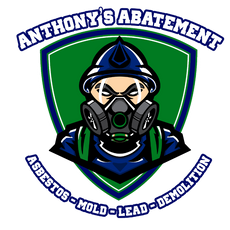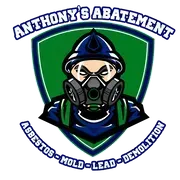Black Mold Removal: Ensuring Health and Safety in Your Home
Discovering black mold in your home can be alarming and pose significant concerns about health and safety. Understanding how black mold forms, recognizing the signs of an infestation, and knowing the proper steps for removal are crucial for maintaining a safe living environment. This page addresses common questions and concerns about black mold to help homeowners effectively manage this issue.
How Black Mold Forms
Black mold, scientifically known as Stachybotrys chartarum, thrives in moist, warm environments with high humidity levels. It often develops from persistent moisture that can come from leaking pipes, flooding, condensation, or poor ventilation in humid areas. Once a water source is present, black mold can start to grow within 24 to 48 hours on surfaces rich in cellulose, such as wood, drywall, and carpet padding.
Signs You Have a Black Mold Problem
Recognizing the signs of black mold is key to addressing it quickly. Common indicators include:
- Visible dark rings and spots on walls, ceilings, or floors.
- A strong musty, earthy smell, especially in damp areas.
- Excessive humidity and ongoing condensation within the home.
- Deterioration of materials like wallpaper peeling, paint bubbling, or warping of wooden structures.
Is Black Mold Dangerous?
Yes, black mold is considered hazardous to health. It produces mycotoxins that can cause a variety of health issues, particularly affecting the respiratory system. Exposure symptoms include chronic coughing, sneezing, irritation of the eyes and throat, skin rashes, and in severe cases, can lead to neurological problems and lung issues. People with asthma or allergies, the elderly, children, and those with compromised immune systems are particularly vulnerable to the effects of black mold.
Where Is Black Mold Commonly Found in Homes?
Black mold can be found in any area that is prone to moisture. Common locations include:
- Bathrooms and kitchens, due to steam and condensation.
- Basements and crawl spaces, where humidity levels are typically higher and ventilation may be inadequate.
- Around windows and piping where leaks and condensation accumulate.
- In attics, if roofing leaks are present.
Can I Remove Black Mold Myself?
For small, contained areas (less than 10 square feet), it is possible to clean up black mold yourself if you are in good health and take the proper safety precautions. This includes wearing gloves, goggles, and an N95 respirator to avoid inhaling spores. Using a solution of water and detergent is effective for non-porous surfaces; however, porous materials contaminated with mold will likely need to be discarded.
For larger infestations, or if the mold is in hard-to-reach places, professional removal is strongly recommended to ensure it is done safely and thoroughly.
How Is Black Mold Professionally Removed?
Professional mold remediation involves a comprehensive process to safely and effectively remove mold:
- Assessment: A professional will first assess the extent of the mold growth and identify the moisture source causing it.
- Containment: To prevent cross-contamination, the affected area will be sealed off using plastic sheeting and negative air pressure.
- Filtration: HEPA filters will be used to clean the air of mold spores and other particles.
- Removal and Cleaning: Infected materials will be removed and discarded. Hard surfaces will be cleaned with antimicrobial agents.
- Drying: The area will be thoroughly dried to eliminate any residual moisture.
- Repair and Restoration: Any damaged structures or materials will be repaired or replaced.
- Final Inspection: A thorough inspection is conducted to ensure all mold has been removed, and preventive measures are taken to avoid future growth.
Understanding the risks and proper procedures for addressing black mold is crucial for maintaining the health and safety of your home. If you suspect you have a black mold issue, it's important to act quickly, either by addressing it yourself for small growths or by calling professionals for more extensive infestations.
Request a Free Estimate
For more information about our services or to schedule an appointment, call us at (959) 202-2675 or complete the form below we’ll get back to you as soon as we can.
Other Services
Request a Free Estimate
To schedule your free estimate, give us a call at (959) 202-2675or click below to our contact page and complete the form.
There are Plenty of Mold & Asbestos Removal Companies in Connecticut
So Why Choose Anthonys Abatement?
Exceptional Customer Service
Speak with a real person, our responsive office staff will get you an estimate within 24 hours.
Experienced, On-time Crews
All technicians have 10-15 years of experience. We use cutting edge technologies and tools to ensure you get accurate results, quickly.
Licensed & Regulation Compliant
We're fully licensed and strictly adhere to all environmental regulations and industry standards.
Local, Family Owned
Anthony's Abatement is family-owned and operated and has been serving CT for over 10 years.
Based in West Hartford, CT
Serving the Whole State of Connecticut
Anthony's Abatement proudly services the entire state of Connecticut. We are committed to delivering exceptional abatement solutions to our valued clients in all areas, ensuring that no corner of the state is left unattended.




